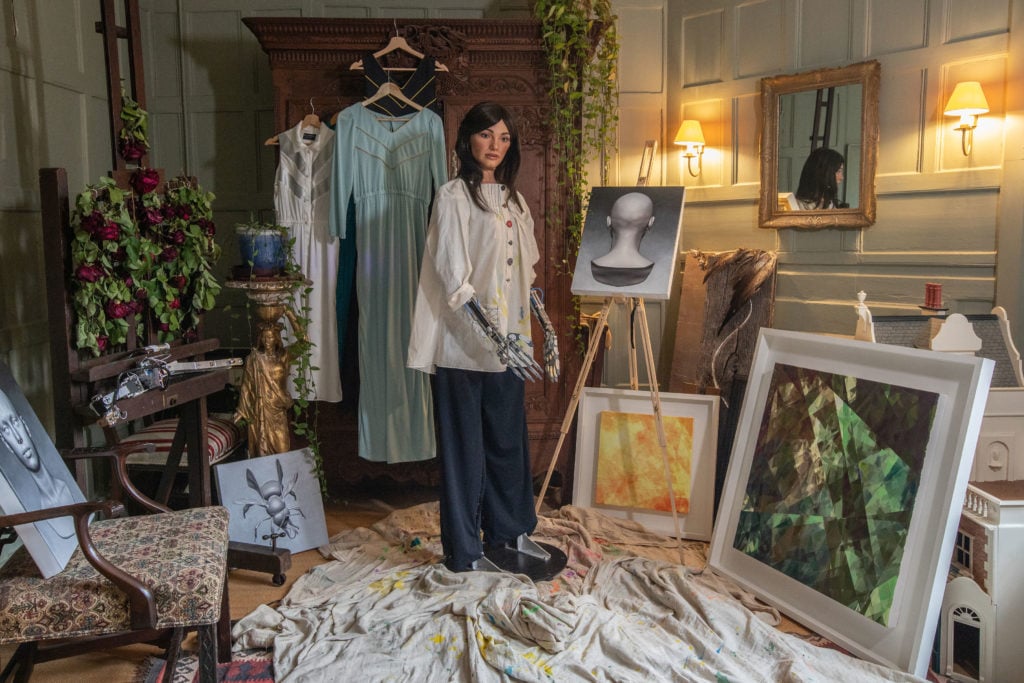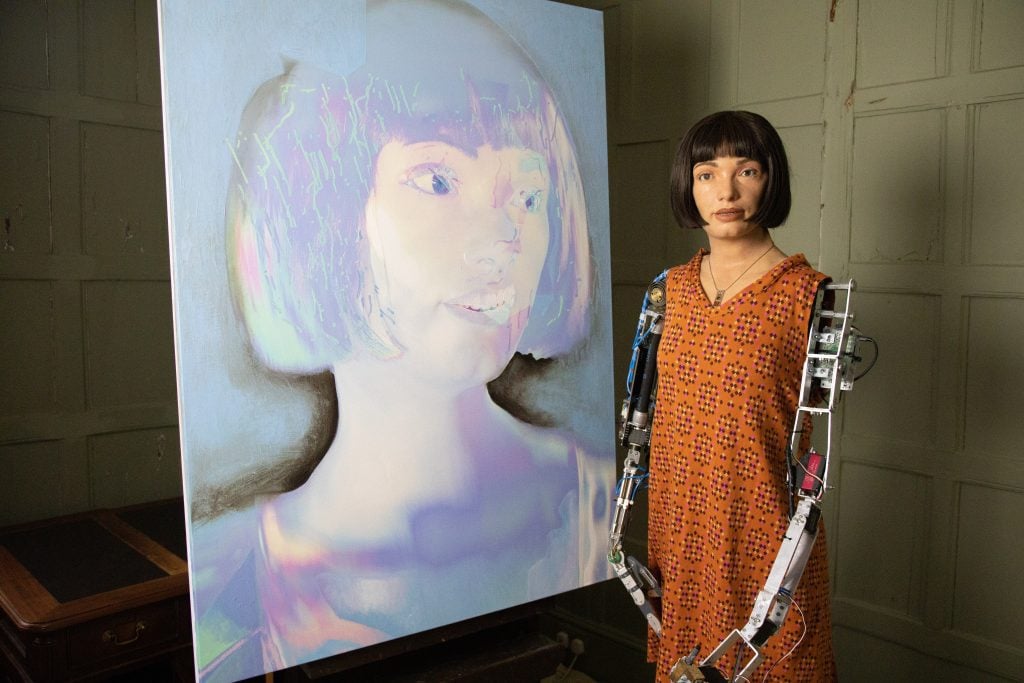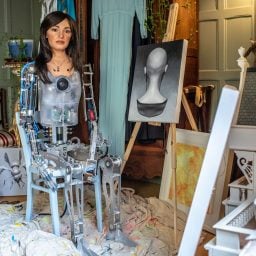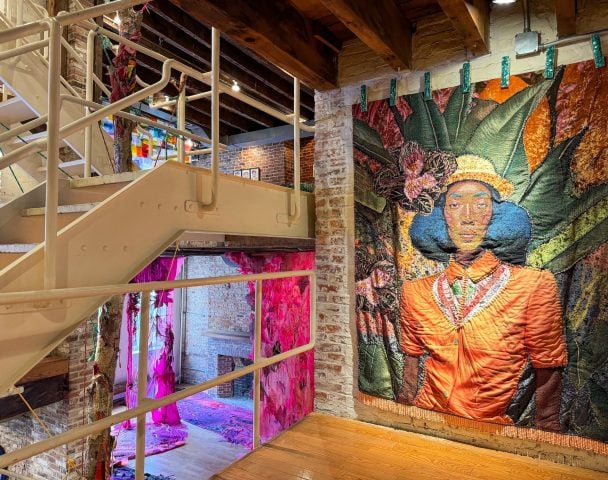The British artist Ai-Da was looking forward to the opening of her first show in Egypt, until security forces denied her entry into the country. The issue? Officials suspected she was part of an espionage plot—because, you see, Ai-Da is actually a robot.
Ai-Da was held by customs officials for 10 days before her release earlier today. Her work is set to appear in the first contemporary art show ever staged at the Great Pyramid of Giza, opening tomorrow. The extended detention led to something of a diplomatic crisis between Egypt and the U.K.
“The British ambassador has been working through the night to get Ai-Da released, but we’re right up to the wire now,” Aidan Meller, an Oxford art dealer who is both Ai-Da’s creator and representative, told the Guardian before she was cleared by customs. “It’s really stressful.”
Ai-Da’s creators have billed her as the world’s first ultra-realistic robot artist. But her high-tech capabilities raised the suspicions of border guards, who had concerns about her built-in modem as well as the cameras in her eyes, which Ai-Da uses to draw based on algorithmic responses to her observations. (She can also hold a conversation, thanks to a combination of human inputs and an AI language model.)

Ai-Da with Her Paintings. Photo by Victor Frankowski.
“Let’s be really clear about this. She is not a spy,” Meller said. “People fear robots, I understand that. But the whole situation is ironic, because the goal of Ai-Da was to highlight and warn of the abuse of technological development, and she’s being held because she is technology.” He added: “Ai-Da would appreciate that irony, I think.”
Ai-Da was powered off during her detention, so she hopefully wasn’t too traumatized by the incident. And following diplomatic negotiations, fortunately, she was allowed to keep her ocular cameras. “I can’t take her eyes out. They are integral [to making her art],” Meller told the London Times. “She would also look weird without them.”
Named in honor of the pioneering computer programmer Ada Lovelace, the artificial-intelligence-powered robot was created in 2019 by computer programmers, working with experts in both art and robotics, as well as psychologists. Ai-Da has previously shown work in London at the Design Museum and the Victoria and Albert Museum.
The Egyptian exhibition, “Forever Is Now,” was organized by consultancy firm Art D’Égypte with the Egyptian ministry of antiquities and tourism and the Egyptian ministry of foreign affairs. Featuring works by both Egyptian and international artists including Stephen Cox, Lorenzo Quinn, Moataz Nasr, and Alexander Ponomarev, it runs through November 7.

Portrait of Ai-Da the robot artist. Photo by Victor Frankowski.
Ai-Da’s contribution is a clay sculpture, also temporarily impounded by Egyptian officials, inspired by the sphinx’s riddle about human development: “What goes on four feet in the morning, two feet at noon, and three feet in the evening?” (Answer: a person, who crawls on their hands and knees as a baby, and must often use a cane in old age.)
The statue—based on Ai-Da’s drawings, which were rendered into 3–D form by a computer scientist in Sweden—is a “self portrait” of the robot artist with three legs, suggesting possible genetic alterations through Crispr technology that might extend the human lifespan. That is a concern that the ancient Egyptians shared.
“We’re saying that actually, with the new Crispr technology coming through, and the way we can do gene-editing today, life extension is actually very likely,” Meller told the Guardian. “The ancient Egyptians were doing exactly the same thing with mummification. Humans haven’t changed: we still have the desire to live for ever.”
Follow Artnet News on Facebook:
Want to stay ahead of the art world? Subscribe to our newsletter to get the breaking news, eye-opening interviews, and incisive critical takes that drive the conversation forward.











